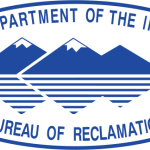- Branche: Government
- Number of terms: 15655
- Number of blossaries: 0
- Company Profile:
A U.S. Department of the Interior agency that oversees water resource management incuding the oversight and operation of numerous diversion, delivery, and storage projects the agency has built throughout the western United States for irrigation, water supply, and attendant hydroelectric power ...
Measure of the health-related and visual characteristics of the air, often derived from quantitative measurements of the concentrations of specific injurious or contaminating substances.
Industry:Engineering
The likelihood that the risk (event) will occur. The probability that the event will occur is measured based on the following guidelines:
* High - Greater than or equal to 90 percent. Mitigation efforts must be vigorous and imaginative in order to reduce the probability of occurrence, commensurate with the severity of impact.
* Substantial - Greater than or equal to 75 percent but less than 90 percent. Mitigation efforts must be developed and pursued vigorously commensurate with possible impact.
* Medium - Greater than or equal to 50 percent but less than 75 percent. Mitigation efforts should be developed and pursued commensurate with possible impact.
* Low - Less than 50 percent. Indicates the risk is one that should be monitored, but appears to have been turned around and no action is needed.
Industry:Engineering
A structure located on or adjacent to a storage or detention dam over or through which surplus or floodwaters which cannot be contained in the allotted storage space are passed, and at diversion dams to bypass flows exceeding those which are turned into the diversion system. Included as part of the spillway would be the intake and/or control structure, discharge channel, terminal structure, and entrance and outlet channels. A spillway that is designed to provide continuous or frequent regulated or unregulated releases from a reservoir without significant damage to either the dam or its appurtenant structures.
Industry:Engineering
A customer-owned electric utility that was created to transmit and distribute power in rural areas. Rural electric cooperatives benefit from below-market financing from the Rural Utilities Service (formerly the Rural Electrification Administration), as well as low-cost power from federal hydroelectric projects. In addition, most do not pay state or federal income taxes. Rates for rural electric cooperatives typically are set by a board of directors elected from among the cooperative's members. Today, rural electric cooperatives serve about 11 percent of the nation's electric customers.
Industry:Engineering
A structure that passes normal and/or flood flows in a manner that protects the structural integrity of the dam. Overflow channel of a dam or impoundment structure. A structure over or through which flow is discharged from a reservoir. If the rate of flow is controlled by mechanical means such as gates, it is considered a controlled spillway. If the geometry of the spillway is the only control, it is considered an uncontrolled spillway. Any passageway, channel, or structure designed to discharge surplus water from a reservoir. See auxiliary spillway, emergency spillway, service spillway, morning glory spillway, shaft spillway, and fuse plug spillway.
Industry:Engineering
The process of determining with confidence whether dam safety deficiencies exist for maximum loading conditions. The MDA process is a technical, state-of-the-art evaluation whose complexity can range from the simplified SEED Analysis Report evaluations using available data, to advanced engineering and geologic analyses conducted using material properties and other data obtained from detailed field and laboratory investigations. The MDA evaluates suspected safety of dam deficiencies, identifies the critical types of loading conditions that may cause dam failure, (e.g., earthquake, flood, and static reservoir loading), and eliminates or verifies suspected deficiencies which are capable of causing failure of the dam.
Industry:Engineering
The estimated loss associated with the risk. While loss may be measured in time, quality, money, control, understanding, etc, the primary effect can be evaluated in one dimension: failure of the project.
Terminal - If the event occurs, the project will fail. This is a show stopper event.
Significant - If the event occurs, the project may fail, or it may succeed, but with substantially lower value.
Moderate - If the event occurs, the project will probably succeed, but with substantially lower value.
Minor - If the event occurs, the project will succeed, but with chronic issues that may lower its value.
Industry:Engineering
A crop production system that involves planting alternating strips of row crops and close-growing forage crops; the forage strips intercept and slow runoff from the less protected row crop strips.
Industry:Engineering
A generating facility that produces electricity and another form of useful thermal energy (such as heat or steam), used for industrial, commercial, heating, or cooling purposes. To receive status as a qualifying facility (QF) under the Public Utility Regulatory Policies Act (PURPA), the facility must produce electric energy and "another form of useful thermal energy through the sequential use of energy," and meet certain ownership, operating, and efficiency criteria established by the Federal Energy Regulatory Commission (FERC). (See the Code of Federal Regulations, Title 18, Part 292.)
Industry:Engineering
Plowing done in accordance with the natural outline or shape of the land by keeping the furrows or ditches at the same elevation as much as possible to reduce runoff and erosion.
Industry:Engineering
